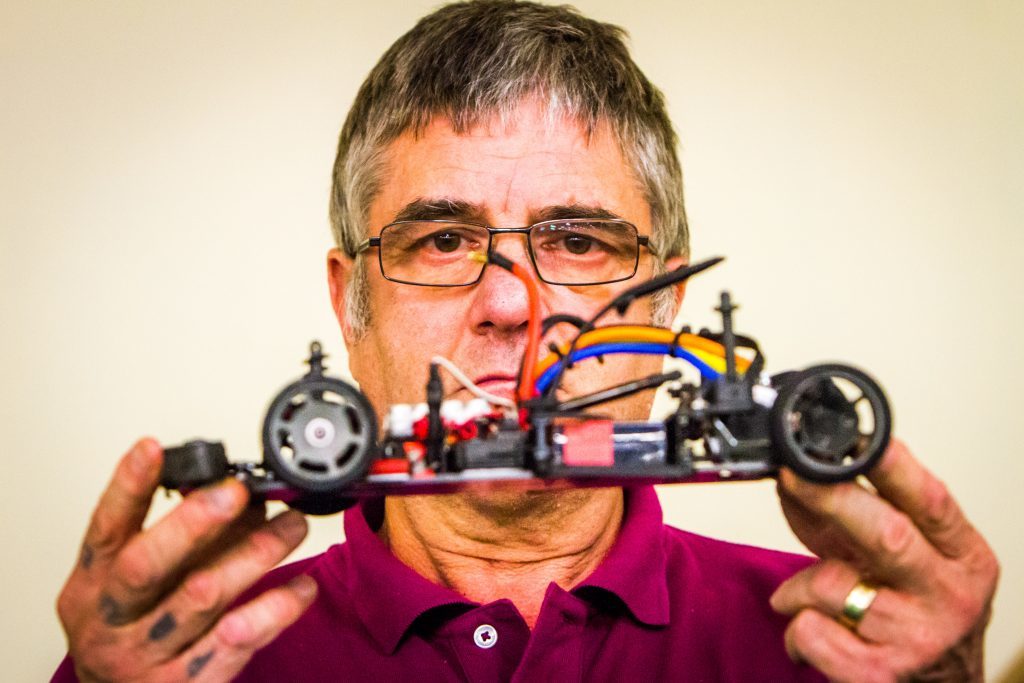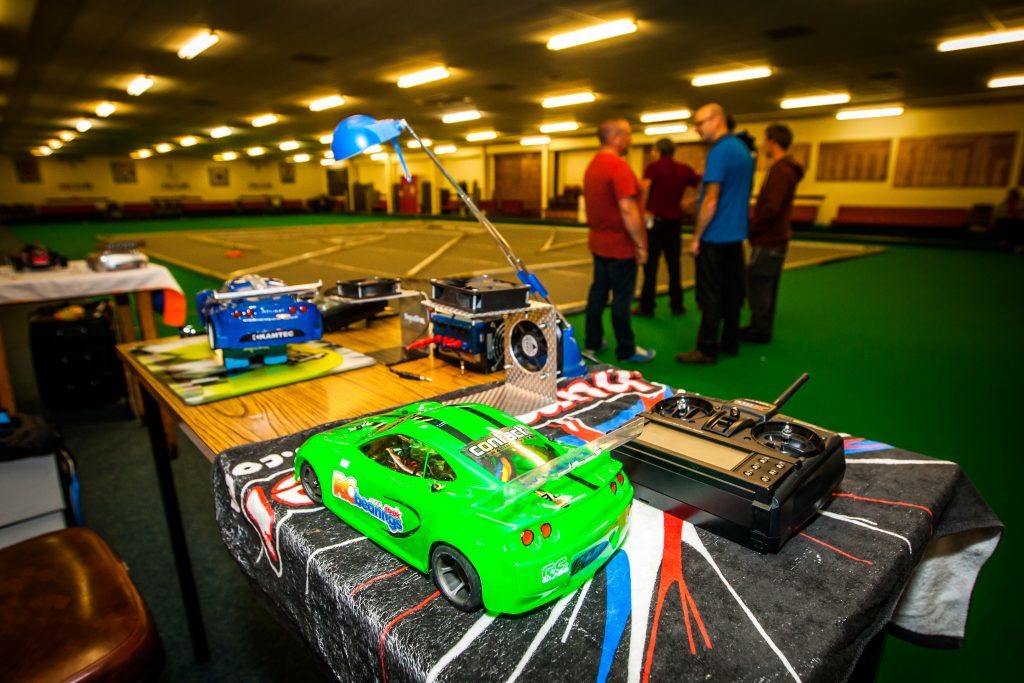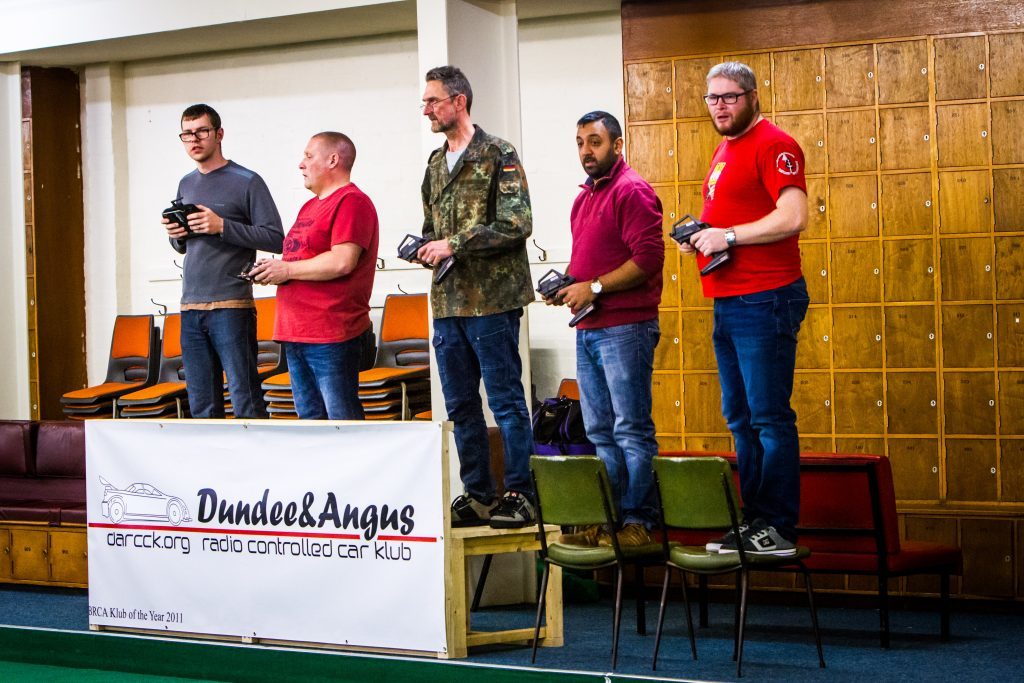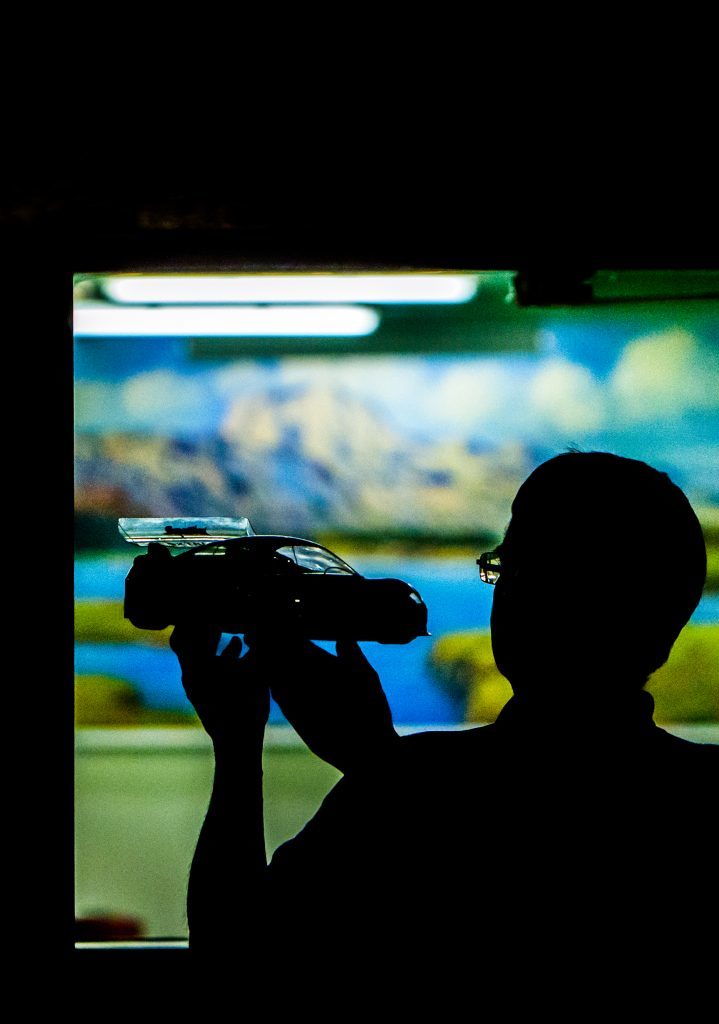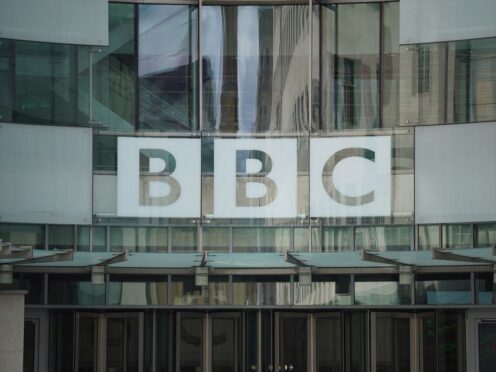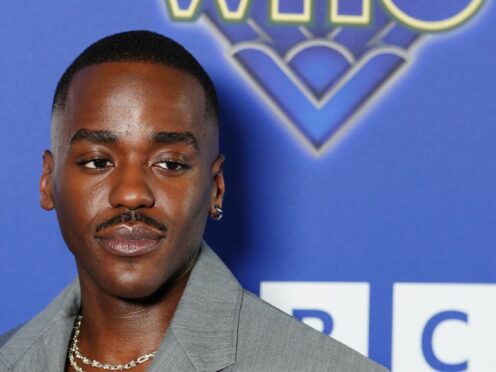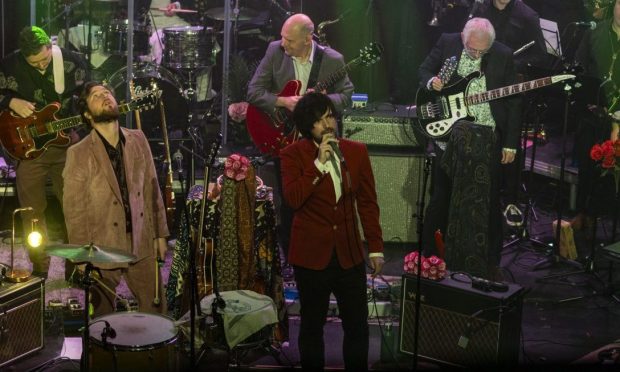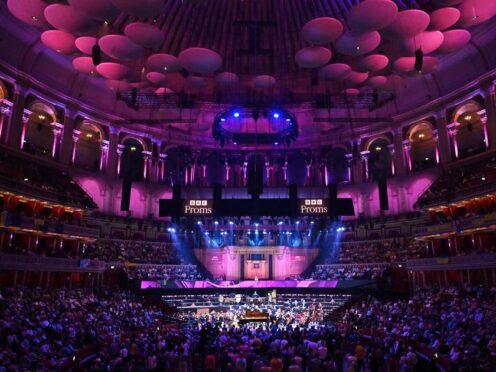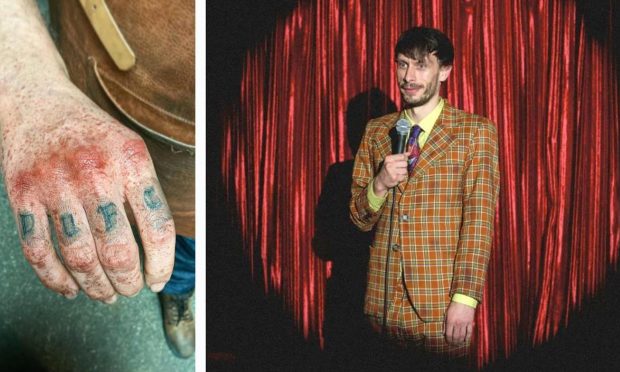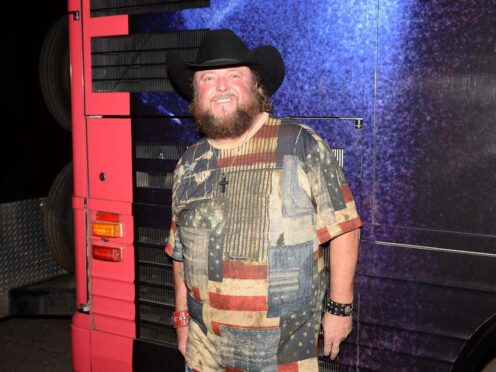They’re moving almost too quickly for the eye to see. It seems incredible that two little joysticks can control such a blur of movement.
At benches to one side of the track Dundee & Angus Radio Controlled Car Club members hunch at desks, tinkering on their cars with screwdrivers and pliers.
Paul Bignall is one of the club organisers. Each week he turns up half an hour before the rest of the radio controlled car enthusiasts to set up the track.
The retired Naval officer then prison officer’s other passion is woodword and he built the lengths of track himself.
“I make the track different every week,” the 62-year old says. “It keeps them on their toes. If they go to a national competition they won’t know the layout of the track so it shouldn’t be any different on training nights.”
The club has around 25 members who gather at Dundee Indoor Bowling Club every Friday night. What’s impressive is how seriously they take the hobby. I watch has half a dozen cars zip round the track.
“Is this a race?” I ask Paul. “No,” he replies. “They’re just warming their tyres up.”
Just like a Formula One car, the little radio controlled units need their tyres to come up to temperature before they’ll stop skidding and bite into the track’s surface.
Sure enough, within a few minutes the skidding has stopped and they’re gripping like limpets through the bends.
The club members race what are called GT12 class cars. They’re primarily made by two brands – Atom and Zen – and club members are divided into each camp. “It’s a bit like when you’re buying a new car and you test drive a Ford, a Vauxhall and a Nissan,” Paul explains. “You get a feel for which one you like best.”
The little cars can reach quite astonishing speeds – 40mph on a long enough straight – and controlling them is no easy matter.
“It takes months to learn to drive them,” Paul says. “Although today’s youngsters are faster because they’re raised on PlayStations and have the co-ordination.”
The club’s top driver is 30-year old joiner John Simpson who’s finished as high as ninth in the UK. Even with The Courier’s GoPro camera strapped to the top of his car he’s still overtaking other cars.
The club is celebrating its 30th anniversary this year. Originally called Dundee Radio Controlled Car Club it changed its name when Angus Council helped facilitate a grant of £700 for track materials then £3000 for technology including a professional standard sports timer.
Each car is fitted with a transponder and the timer measures their laps to within hundredths of a second. The results are displayed on a huge television monitor within moments of each race ending and a push of a button emails all members’ their results and standings at the end of a night’s racing.
It’s a far cry from when Paul got into the hobby in the late 1970s and races were timed by men with stopwatches. “It’s changed so much since I got started,” he reminisces. “Batteries have come on so much. In the 70s they lasted about three minutes. Now there much smaller and you get more than quarter of an hour out of them.”
